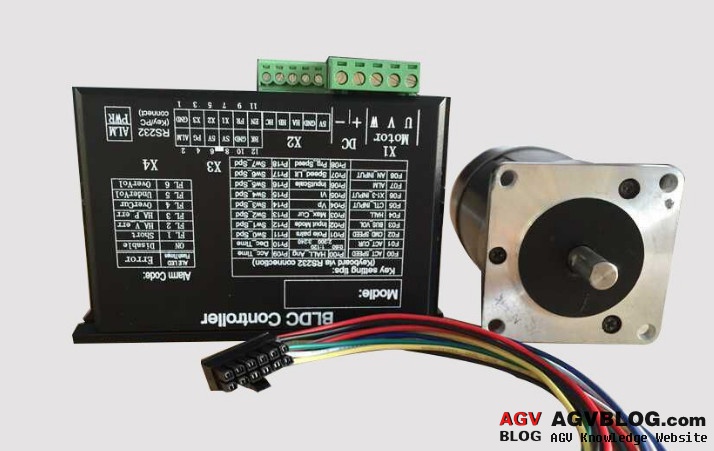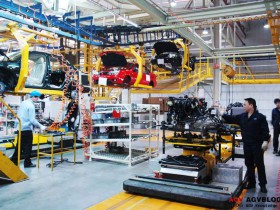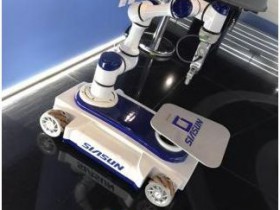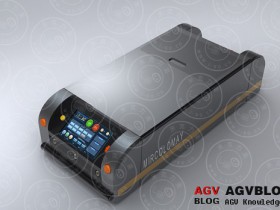
Three-phase AC servo motors are widely used, but after long-term operation, various failures will occur. Judging the cause of the fault in time and handling it accordingly is an important task to prevent the fault from expanding and to ensure the normal operation of the equipment.
The main faults and analysis of the servo motor:
First, the noise is abnormal when the motor is running, there are abnormal noises
1, the cause of the fault
① the bearing is worn or there are foreign objects such as sand particles in the oil;
② the rotor core is loose;
③ the bearing is short of oil;
④ the power supply voltage is too high Or unbalanced.
2. Troubleshooting
①Replace the bearing or clean the bearing;
②Repair the rotor core;
③Lubricate;
④Check and adjust the power supply voltage.
Second, the motor encoder alarm
1, the cause of the fault
① wiring error;
② electromagnetic interference;
③ damage to the encoder hardware caused by mechanical vibration;
④ pollution caused by the site environment;
2, troubleshooting
① check the wiring and eliminate the error;
② check whether the shielding In place, check whether the wiring is reasonable and resolved, add filters to improve if necessary;
③ Check the mechanical structure and improve it;
④ Check whether the inside of the encoder is contaminated and corroded (dust, oil, etc.), strengthen protection;
3. Installation and Wiring standard
① Try to use original cables;
② Separate the cable to keep it away from contaminated wiring
as much as possible , especially high-pollution wiring; ③ Always use internal power supply whenever possible. If you use a switching power supply, you should use a filter to ensure that the power supply reaches a clean level;
④Always ground the common terminal;
⑤Keep the encoder housing insulated from the machine structure and connect to the cable shield;
⑥If the encoder cannot be insulated, then The cable shield can be connected to the ground (or dedicated terminal) on the encoder housing and driver frame.
3. The motor cannot rotate after being energized, but there is no abnormal noise, odor and smoke.
1. Cause of failure
① The power supply is not connected (at least two phases are not connected);
② The fuse is blown (at least two phases are fused);
③ Overcurrent relay The adjustment is too small;
④The control device wiring is wrong.
2. Trouble shooting
① Check the power circuit switch, whether there is a breakpoint at the fuse and junction box, repair;
② Check the fuse type, the reason of the fuse, and replace with a new fuse;
③ Adjust the setting value of the relay to cooperate with the motor;
④ Correct the wiring.
4. The shaft breaks of the motor
1. The cause of the fault
① The unreasonable mechanical design leads to excessive radial load;
② The load end is stuck or severe transient overload;
③ The motor and the reducer are not concentric during assembly;
2. Troubleshooting
① Check the motor The maximum radial load force in the sample can be improved to improve the mechanical design;
② Check the operation of the load end, confirm the actual process requirements and improve it;
③ Check whether the load operation is stable and whether there is vibration, and improve the accuracy of mechanical assembly.
Fifth, the motor no-load current is unbalanced, the three-phase phase difference is large
, and the cause of the fault
①The windings are connected at the wrong end;
② The power supply voltage is unbalanced;
③ The winding has short-circuit between turns and reverse connection of the coil.
2. Trouble shooting
①Check and correct;
②Measure the power supply voltage and try to eliminate the unbalance;
③Remove the winding fault.
Sixth, the motor does not turn and there is hum after the power is turned on.
1. The cause of the fault
①The rotor winding is broken (one phase is disconnected) or the power supply is out of phase;
②The beginning and end of the winding lead wire are connected incorrectly or the internal winding is reversed;
③Power circuit The contact is loose, the contact resistance is large;
④ The motor load is too large or the rotor is stuck;
⑤ The power supply voltage is too low;
⑥ The assembly of the small motor is too tight or the grease in the bearing is too hard;
⑦ The bearing is stuck.
2. Trouble shooting
① Identify the breakpoint and fix it;
② Check the polarity of the winding; determine whether the end of the winding is correct;
③ Tighten the loose wiring screws, use a multimeter to determine whether each connector is falsely connected, and repair it;
④ Reduce the load or find out And eliminate mechanical failures;
⑤ Check whether the specified surface connection is mistakenly connected; whether the voltage drop is too large due to the power wire being too thin, and correct it;
⑥ reassemble to make it flexible; replace qualified grease;
⑦ repair the bearing.
7. It is difficult to start the motor at rated load.
The motor speed is more than the rated speed
1. The cause of the fault
①The power supply voltage is too low;
②The face connection motor is wrongly connected;
③The rotor is welded or broken;
④The rotor local coil is wrongly connected or reversed, and the number of turns is increased when repairing the motor winding. many.
⑤ The motor is overloaded.
2. Troubleshooting
①Measure the power supply voltage and try to improve it;
②Correct the connection;
③Check the welding and breakpoints and repair;
④Identify the wrong connection and correct it;
⑤Recover the correct number of turns;
⑥Reduce the load.
Eight , motor overheating and even smoke
a cause of the malfunction
① voltage is too high;
② supply voltage is too low, the motor has rated load operation, the heating coil current Ambassador;
③ The removal of the winding repair, improper use of the heat removed method, iron burns Core;
④Motor overload or frequent start;
⑤Motor lack of phase , two-phase operation;
⑥Insufficient paint immersion in winding after rewinding;
⑦Ambient temperature is high, motor surface has much dirt, or the air duct is blocked.
2. Trouble shooting
① Reduce the power supply voltage (such as adjusting the power supply transformer tap);
② Increase the power supply voltage or replace the thick power supply wire;
③ Repair the iron core to eliminate the fault;
④ Reduce the load; Control the start according to the specified number of times;
⑤ Restore three-phase operation ;
⑥ Adopting secondary dipping and vacuum dipping process;
⑦ Cleaning the motor, improving the ambient temperature, and adopting cooling measures.
Nine, the motor vibration is large during operation
1. The cause of the fault
① The bearing clearance is too large due to wear;
② The air gap is uneven;
③ The rotor is unbalanced;
④ The shaft is bent;
⑤ The coupling (belt pulley) is too low in coaxiality.
2. Troubleshooting
①Repair the bearing and replace it if necessary;
②Adjust the air gap to make it even;
③Correct the rotor dynamic balance;
④Straighten the shaft;
⑤Recalibrate it to meet the regulations.
10. Overheating of the bearing
1. The cause of failure
① Too much or too little grease;
② Poor oil quality containing impurities;
③ Improper fit of the bearing and the journal or end cap (too loose or too tight);
④ The bearing bore is eccentric, and Shaft rubbing;
⑤ The motor end cover or bearing cover is not flat;
⑥ The coupling between the motor and the load is not corrected, or the belt is too tight ;
⑦ The bearing gap is too large or too small;
⑧ The motor shaft is bent.
2. Troubleshooting
① Add grease as required (1 / 3-2 / 3 of the volume);
② Replace the cleaned grease;
③ If it is too loose, it can be repaired with an adhesive agent, if it is too tight, it should be tightened, and the journal or the inner hole of the end cap should be ground. To make it suitable;
④Repair the bearing cover and eliminate the rubbing points; for more exciting content, please pay attention to the micro signal technology training;
⑤reassemble;
⑥recalibrate and adjust the belt tension;
⑦replace the new bearing;
⑧correct the motor shaft or replace the rotor .
Have you learned these ten failure analysis?




